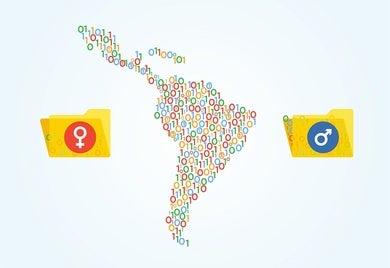
How Argentina can attract the private sector
This week I had the opportunity to participate in the Argentina Business and Investment Forum in Buenos Aires. The world has been watching as the country took center stage to start the conversation with the private sector and discuss ways to open its markets to the world.

Why does the private sector need capital markets?
Across emerging markets, access to finance is one of the largest barriers to success for private enterprises. Business leaders cite scarcity of credit as their main concern for growth, outweighing issues like corruption, tax and political instability.

Three ways to strengthen financing for private companies in the Caribbean
Growing up in The Bahamas, I remember my grandmother’s asue. There weren’t any banks where she lived on the island of Inagua, and even if there had been, it wasn’t customary for women to frequent them. To adapt, women (and sometimes men) formed their own informal savings groups, known as asues. As her group’s custodian, my grandmother collected a weekly contribution from participants who would then withdraw money on special occasions to cover school fees or larger purchases.

The COVID-19 Crisis: An Opportunity for the Financial Sector
Unlike the 2007–2009 crisis, when the global banking system was one of the factors that caused the economic downturn, in this crisis banks are set to be part of the solution. That is the role they must play. How can they do this?

How to achieve women’s financial inclusion: The role of financial intermediaries and strong sex-disaggregated data
In light of the number of initiatives developed in Latin America and the Caribbean to help increase the availability and use of sex-disaggregated demand-side (customer) and supply-side (institution) data across the ecosystem, you may think we’ve moved on from asking financial intermediaries: “How big is the women’s market opportunity in Latin America and the Caribbean?” to “Did the women’s market initiative perform as expected”? We have not.

Five reasons FinTech companies are an opportunity for financial institutions and SMEs
By Greg Da Re Access to financing has been and continues to be the main obstacle facing small and medium-sized enterprises (SMEs). According to a recent survey, 90% of all banks surveyed in Latin America and the Caribbean consider SMEs strategically important for their business, yet 44% acknowledge that their portfolio lacks suitable financial products for such enterprises.